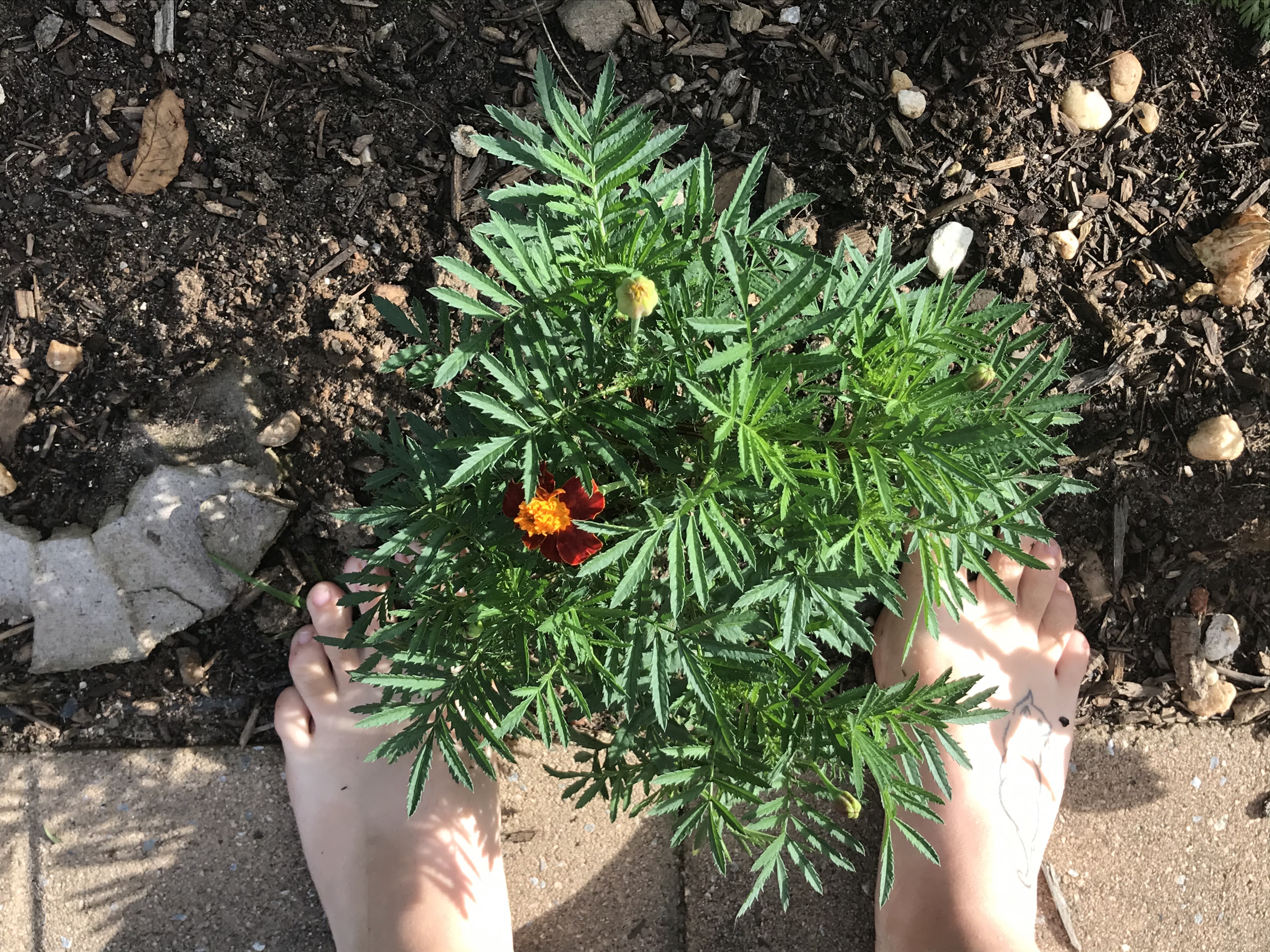Gardening as a Mindfulness Practice
go.ncsu.edu/readext?708915
en Español / em Português
El inglés es el idioma de control de esta página. En la medida en que haya algún conflicto entre la traducción al inglés y la traducción, el inglés prevalece.
Al hacer clic en el enlace de traducción se activa un servicio de traducción gratuito para convertir la página al español. Al igual que con cualquier traducción por Internet, la conversión no es sensible al contexto y puede que no traduzca el texto en su significado original. NC State Extension no garantiza la exactitud del texto traducido. Por favor, tenga en cuenta que algunas aplicaciones y/o servicios pueden no funcionar como se espera cuando se traducen.
Português
Inglês é o idioma de controle desta página. Na medida que haja algum conflito entre o texto original em Inglês e a tradução, o Inglês prevalece.
Ao clicar no link de tradução, um serviço gratuito de tradução será ativado para converter a página para o Português. Como em qualquer tradução pela internet, a conversão não é sensivel ao contexto e pode não ocorrer a tradução para o significado orginal. O serviço de Extensão da Carolina do Norte (NC State Extension) não garante a exatidão do texto traduzido. Por favor, observe que algumas funções ou serviços podem não funcionar como esperado após a tradução.
English
English is the controlling language of this page. To the extent there is any conflict between the English text and the translation, English controls.
Clicking on the translation link activates a free translation service to convert the page to Spanish. As with any Internet translation, the conversion is not context-sensitive and may not translate the text to its original meaning. NC State Extension does not guarantee the accuracy of the translated text. Please note that some applications and/or services may not function as expected when translated.
Collapse ▲Lately, I have seen many articles and advertisements telling me to increase my mindfulness and try meditation, yoga, and other forms of mindfulness practice. While I have tried to actively incorporate these activities into my life, I found them to not be as successful as I would like, leading me to consider ways that I can practice mindfulness using activities that are already part of my daily routine. Gardening was the first thing that came to my mind, as it is a meditative practice when I am intentional and conscientious of my mind’s wanderings and thoughts. So over the last few months, I have been working to increase my conscientiousness while gardening and have found it to be helpful to my mental state overall. Since we are all in the position of regulating our mental loops and states, I thought that it would be worth sharing some of what I have learned.
Mindfulness is referring to the state of being conscious and aware, being in tune with the present moment, and awareness of your present emotional and physical state. We all tend to ruminate and have thoughts going in every direction constantly, and so we are oftentimes either in the past or the future in our minds. And yet, I have heard for years about the importance of ‘being present’ to quell brain drain and increase overall well-being. This is often recommended to practice daily, where you are intentionally pushing your mind to concentrate actively on where you are, what you are doing, and how you are feeling in the moment. When we practice this regularly we feel less reactive and overwhelmed by what is going on around us. A big part of this, and what I have found to be especially difficult with my practice, is suspending my judgment of things and instead, focusing my senses and curiosity on what I am seeing and experiencing.
Gardening is a perfect place to practice mindfulness because it is a daily activity that invites you to be present and curious in its very nature. It also invites compassion for your self and the environment as you work to create a balanced and functional ecosystem. Psychologists are talking about all of the health benefits that they’re seeing in patients who actively practice mindfulness, and as gardeners, we know that there are many physical and mental health benefits from gardening regularly, so it only makes sense to me to combine these two practices.
Consider: what about your garden brings you joy? Are there certain plants that awaken your senses of touch, sight, and smell? Are there plants that attract birds and pollinators who you love to watch? How can you better engage with the environment around you as you garden? I garden barefoot so that I can feel the earth on my feet so I am literally grounded as I weed, plant, harvest and do any other garden tasks that don’t involve sharp tools.

Photo: Hannah Bundy, NC State University
Being aware of how the soil feels below your feet, how your breath feels, etc. can help bring you back into the present moment and allow you to feel the connection between body, mind, and the environment. Weeding can even be used as a mindfulness practice if you use it as a physical and visual metaphor for deliberately removing whatever stressors you’re experiencing on a particular day. I find that when I am having a hard time staying present, and generally feeling overwhelmed, pulling weeds in my garden helps immensely to calm me down and relax my nervous system, especially if I am keeping my focus on what I am doing rather than what brought me to weeding initially.
Find ways to bring intentionality and presence into your daily gardening routine that actively increase your aptitude for mindfulness and overall well-being. A large part of the fun is getting to stretch your mind and use your imagination to be more present as you work in your garden and connect to the beauty of the natural world. Many blessings to you along your mindfulness gardening journey!


